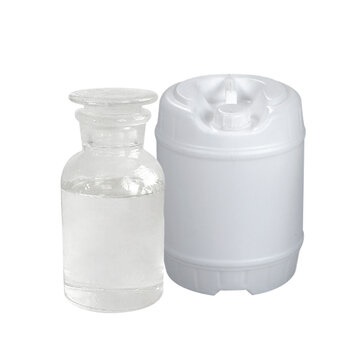Hydrazine and its derivatives, commonly referred to as hydrazine class compounds, are vital chemicals with a wide range of applications across various industries. Known for their high reactivity and unique properties, these compounds are used in everything from aerospace engineering to pharmaceuticals. However, their handling and use come with significant safety considerations due to their toxic and reactive nature. In this blog post, we will explore the applications of hydrazine class compounds and discuss the safety measures necessary to manage their risks effectively.
Understanding Hydrazine Class Compounds
Hydrazine (N2H4) is a simple, colorless, and highly reactive inorganic compound. It is commonly used as a precursor to various derivatives and as a reducing agent. Hydrazine derivatives include hydrazides, hydrazones, and substituted hydrazines, each with distinct chemical properties and applications.
Applications of Hydrazine Class Compounds
1. Aerospace and Rocket Propellants
One of the most prominent uses of hydrazine is as a rocket propellant. Hydrazine and its derivatives, such as unsymmetrical dimethylhydrazine (UDMH) and monomethylhydrazine (MMH), are hypergolic propellants, meaning they ignite spontaneously upon contact with an oxidizer. This property makes them highly efficient and reliable for use in spacecraft propulsion systems. Hydrazine-based propellants have been used in various space missions, including satellite launches and space exploration missions.
2. Chemical Synthesis
Hydrazine is widely used as a reducing agent in chemical synthesis. It plays a crucial role in the production of various pharmaceuticals, agrochemicals, and specialty chemicals. For instance, hydrazine is used in the synthesis of hydrazones and hydrazides, which are intermediates in the production of active pharmaceutical ingredients (APIs) and herbicides. Its strong reducing properties make it valuable in numerous organic transformations, including the Wolff-Kishner reduction, which is used to convert carbonyl compounds to alkanes.
3. Polymerization and Plastics
In the polymer industry, hydrazine is used as a blowing agent for the production of polymer foams. Azodicarbonamide (ADC), a derivative of hydrazine, is commonly used to create foamed plastics by releasing nitrogen gas when heated, resulting in lightweight and porous materials. These foamed plastics are used in applications ranging from insulation to packaging and automotive components.
4. Water Treatment
Hydrazine is utilized in water treatment processes, particularly in boiler water treatment. It acts as an oxygen scavenger, effectively removing dissolved oxygen from water and preventing corrosion in boiler systems. This application is crucial in maintaining the integrity and efficiency of industrial boilers, especially in power plants and manufacturing facilities.
5. Pharmaceuticals
Hydrazine derivatives are important in the pharmaceutical industry. Certain hydrazine-based compounds exhibit potent biological activity and are used in the treatment of diseases such as tuberculosis, cancer, and depression. For example, isoniazid, a hydrazide derivative, is a first-line drug for the treatment of tuberculosis. Additionally, hydrazine derivatives are being investigated for their potential as anticancer agents due to their ability to inhibit tumor growth and induce apoptosis in cancer cells.
Safety Considerations for Hydrazine Class Compounds
Toxicity and Health Risks
Hydrazine and its derivatives are highly toxic and can pose significant health risks if not handled properly. Exposure to hydrazine can cause severe irritation to the skin, eyes, and respiratory system. Inhalation or ingestion of hydrazine can lead to symptoms such as nausea, headache, dizziness, and even convulsions. Prolonged or repeated exposure may result in liver and kidney damage, and hydrazine is classified as a potential human carcinogen.
Reactive and Explosive Nature
Hydrazine is highly reactive and can form explosive mixtures with air. It reacts violently with oxidizing agents and can decompose explosively when exposed to heat, shock, or friction. Therefore, it is essential to handle hydrazine with extreme caution and adhere to strict safety protocols to prevent accidents and ensure the safety of personnel and facilities.
Storage and Handling Precautions
Proper storage and handling of hydrazine class compounds are critical to minimizing risks. Key safety measures include:
- Storage: Hydrazine should be stored in tightly sealed containers made of compatible materials, such as stainless steel or high-density polyethylene. It should be kept in a cool, well-ventilated area away from sources of heat, sparks, and open flames.
- Personal Protective Equipment (PPE): Workers handling hydrazine should wear appropriate PPE, including gloves, safety goggles, face shields, and protective clothing. Respiratory protection may be necessary in situations where there is a risk of inhalation.
- Ventilation: Work areas where hydrazine is used should be equipped with adequate ventilation systems to prevent the accumulation of vapors and ensure a safe working environment.
- Spill and Leak Procedures: In the event of a spill or leak, immediate action should be taken to contain and clean up the hydrazine. Spill kits containing absorbent materials, neutralizing agents, and appropriate PPE should be readily available.
- Training and Emergency Response: Personnel handling hydrazine should receive thorough training on its hazards, safe handling procedures, and emergency response protocols. Regular drills and emergency response plans should be in place to address potential incidents.
Regulatory Compliance
Due to the hazards associated with hydrazine, its use and handling are subject to strict regulatory oversight. Various regulatory agencies, such as the Occupational Safety and Health Administration (OSHA), Environmental Protection Agency (EPA), and European Chemicals Agency (ECHA), have established guidelines and regulations to ensure the safe use of hydrazine and its derivatives. Compliance with these regulations is essential to protect workers, the environment, and public health.



